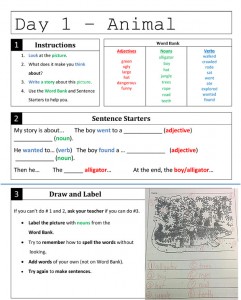Language Supports and Differentiated Materials

I invite you to peruse some of the instructional supports I use, adaptations I have made as well as work my students have produced.
- Vocabulary
- Speaking to Writing Connection
- Writing
- Assessment Differentiation – Keeping the Rigor
- Culturally Responsive Adaptation
Vocabulary
I use the Frayer Model 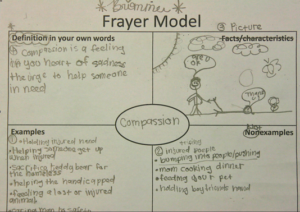 and also adaptations of Marzano’s 6 Steps. Using strategies like these, alongside Beck’s Model and multiple meaning-rich interactions, I’ve seen students’ academic lexicon explode.
and also adaptations of Marzano’s 6 Steps. Using strategies like these, alongside Beck’s Model and multiple meaning-rich interactions, I’ve seen students’ academic lexicon explode.
I believe in using concrete images whenever possible and pairing them with student-friendly definitions and student drawings.
Together, I’ve found this can help students connect to vocabulary more quickly and thus retain it longer.
View a sample of Vocabulary Powerpoint.
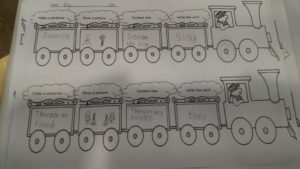 |
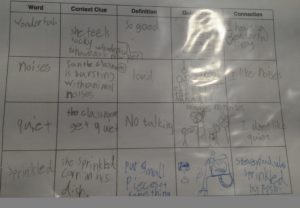 |
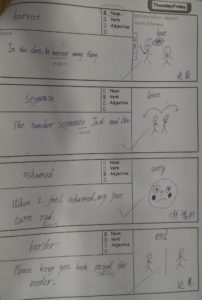 |
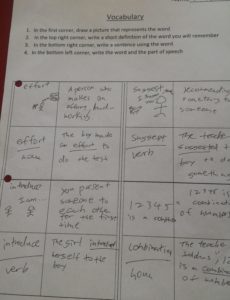 |
Speaking to Writing Connection
R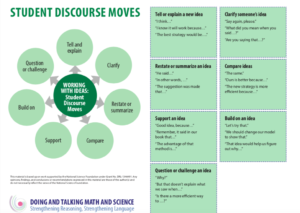 esearch tells us that ELLs benefit from making connections from speaking to writing when grappling with academic content. In my experience, most learners benefit from clarifying and developing understanding of complex concepts verbally. Two of the best tools I’ve found to address this Jeff Zwiers’ Academic Conversation Placemat with Prompts and the National Science Foundation’s Discourse Moves (http://stem4els.wceruw.org/).
esearch tells us that ELLs benefit from making connections from speaking to writing when grappling with academic content. In my experience, most learners benefit from clarifying and developing understanding of complex concepts verbally. Two of the best tools I’ve found to address this Jeff Zwiers’ Academic Conversation Placemat with Prompts and the National Science Foundation’s Discourse Moves (http://stem4els.wceruw.org/).
While these take some modeling, norming and feedback, and certainly need some adjustments for younger learners and entering/emerging language learners, I’ve found the process to be invaluable in providing learners the structures and conventions for deepening thinking. Higher level discussions, even with limited vocabulary, are fun for learners and definitely lay the ground work for better writing.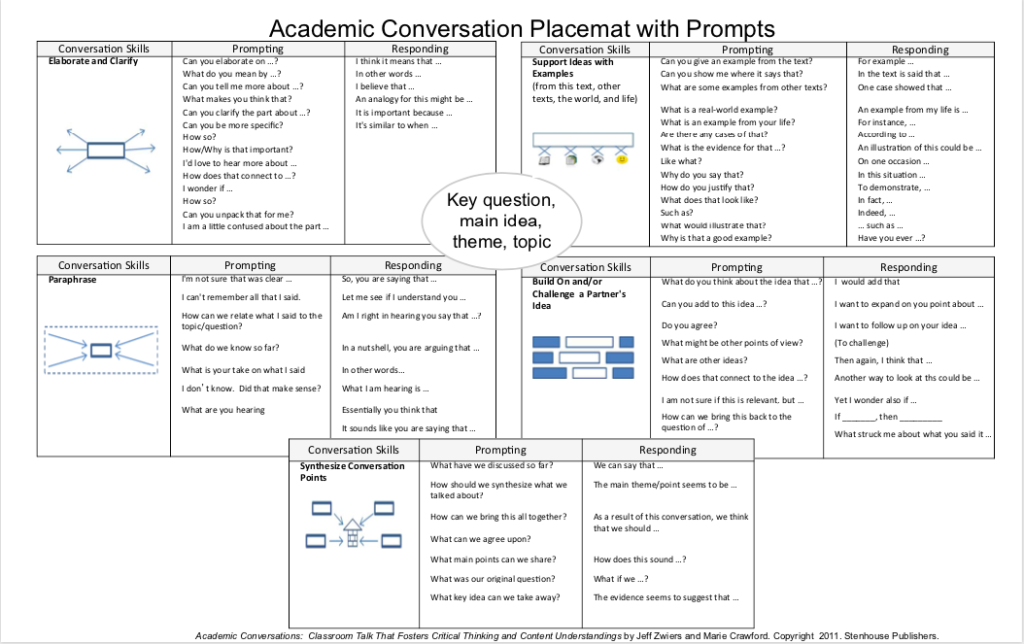
Writing Scaffolds
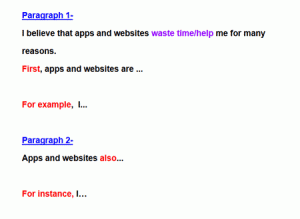 I’ve found the combination of the following to be game-changers for my students:
I’ve found the combination of the following to be game-changers for my students:
- Analyzing Models
- Using background knowledge to generate vocabulary and ideas
- Sentence Frames and Word Banks
- Peer Feedback
At first, student use of sentence frames may sound formulaic, but over time students start to make the forms their own as they build vocabulary, analyze models further and make adjustments from targeted feedback.
See samples below of student work using these four strategies:
- WIDA level 2 — Student with Interrupted or Formal Education (SLIFE)
- WIDA level 3 — Student with Interrupted or Formal Education (SLIFE)
Writing Scaffold Sample
After reviewing our standarized reading data along WIDA writing assessment data, we as a school determined that we had some issues with writing related to stamina. As one of many initiatives to address this, our school rolled out a mandatory writing period; where for 20 minutes each day, everyone the school would write. A sample writing prompt for elementary can be found here.
While this was a great step for our school, it was a shock to the system for our WIDA level 2s and 3s. Imagine trying to write in a non-native language for 20 minutes a day as an emergent language learner!
The challenge then was to devise a scaffold that could be used with the prompt for WIDA 2-3. This is a sample of the scaffold for the sample writing prompt. The full set can be viewed here.
The response was overwhelming. Students went from being frustrated and producing nothing, to filling multiple pages in a matter of weeks.
Assessment Differentiation – Keeping the Rigor
As a part of our unit on non-fiction, our 2nd grade team designed a reading test to assess the following standards:
- RI2.8: Describe how reasons support specific points the author makes in a text.
- RI2.9: Compare and contrast the most important points presented by two texts on the same topic.
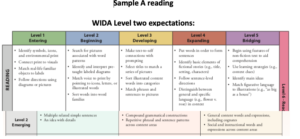
The grade had several WIDA level twos who were reading in the A range on F+P running records and BR range on MAP. As a team, we were concerned that the assessment was not accessible to our WIDA level 2s and that the assessment would not return useable data regarding students’ true ability to demonstrate their knowledge as it relates to these standards.
After deconstructing the standards into component parts, we were able to adapt the assessment text to fit the criteria for emerging readers using the WIDA Performance Definitions. Once we had accessible reading material that fit the standards being measured, we were then able to use the Can Do Descriptors and List of Supports to design supports for the assessment.
The results were amazing! Teachers learned that students had a much higher proficiency with the skills of identifying key point and details and comparing and contrasting than they had anticipated. This in turn helped them to design their next unit to build off of this proficiency and extend it. From the student point of view, our WIDA 2s were able to demonstrate their knowledge, lower their affective filter, and build confidence as readers.
Culturally Responsive Teaching
When teaching my new-to-country SLIFE students family vocabulary, I found that the Western-centric imagery and material for teaching family structure was not working for my students. Part of this, is that the material in a lot of ESL texts is not representative of the cultures many students come from.
To counter this, I created some material using actual photos of Somali families as well as some graphic organizers that reflected their family structure as well as using names that were more representative of their background. The result was telling. Students picked up the vocabulary faster and used it more effectively.

